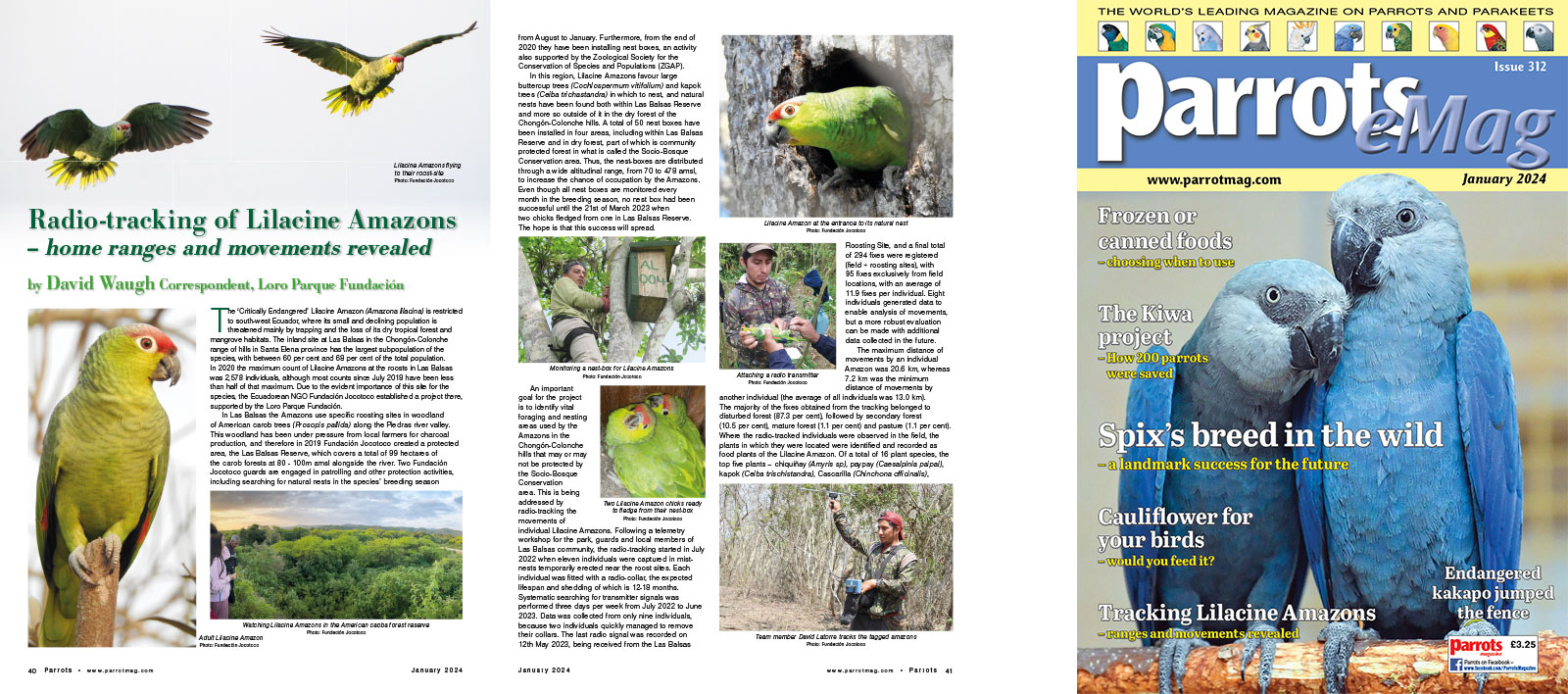
By David Waugh Correspondent, Loro Parque Fundación
The ‘Critically Endangered’ Lilacine Amazon (Amazona lilacina) is restricted to south-west Ecuador, where its small and declining population is threatened mainly by trapping and the loss of its dry tropical forest and mangrove habitats. The inland site at Las Balsas in the Chongón-Colonche range of hills in Santa Elena province has the largest subpopulation of the species, with between 60 per cent and 68 per cent of the total population. In 2020 the maximum count of Lilacine Amazons at the roosts in Las Balsas was 2,578 individuals, although most counts since July 2018 have been less than half of that maximum. Due to the evident importance of this site for the species, the Ecuadorean NGO Fundación Jocotoco established a project there, supported by the Loro Parque Fundación.
In Las Balsas the Amazons use specific roosting sites in woodland of American carob trees (Prosopis pallida) along the Piedras river valley. This woodland has been under pressure from local farmers for charcoal production, and therefore in 2019 Fundación Jocotoco created a protected area, the Las Balsas Reserve, which covers a total of 99 hectares of the carob forests at 80 - 100m amsl alongside the river. Two Fundación Jocotoco guards are engaged in patrolling and other protection activities, including searching for natural nests in the species’ breeding season from August to January. Furthermore, from the end of 2020 they have been installing nest boxes, an activity also supported by the Zoological Society for the Conservation of Species and Populations (ZGAP).
